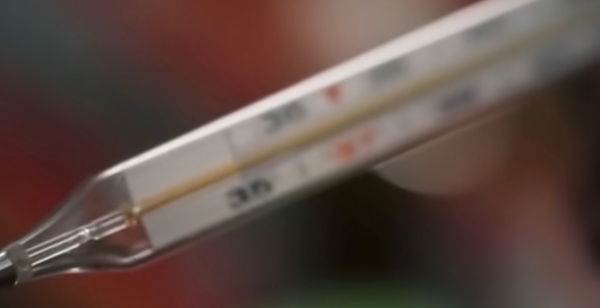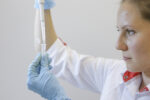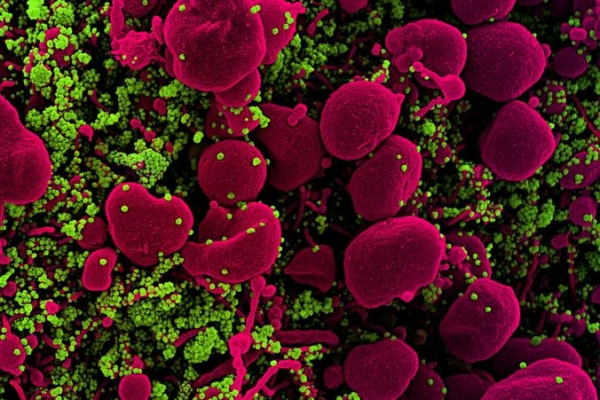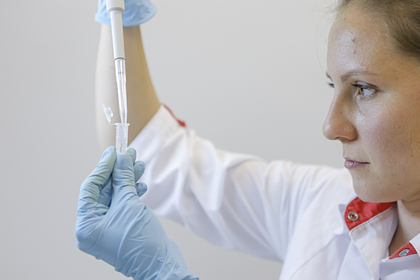
All available data show that the coronavirus is SARS-CoV-2 does not pose much of a threat to children. However, children can transmit the virus and infect adults for whom the consequences can be far more dire.
Pediatricians urge you not to lose vigilance. Don’t forget about the alarming signs and symptoms that your child is in danger.
Scientists have managed to collect preliminary data on the course of infection, caused by a new coronavirus and to identify groups that are particularly vulnerable to severe COVID-19 – the disease caused by this pathogen. Mostly older people, but also with hypertension, diabetes, renal failure or reduced immunity, e.g., due to cancer.
Children get sick with coronavirus? Statistics on real data
Data for this subject were collected and published, among other things, scientists from China and the United States.

A recent survey by the Chinese center for control and prevention of diseases relating to more than 72 000 people infected in China showed that less than 1% of them were children under 10 years.
The authors in the NEJM examined the children, who, because of infection with the novel coronavirus was taken to children’s hospital in Wuhan is the only one in this city, which was assigned to the care of patients infected before the age of 16 years.
See the statistics of coronavirus in Russia
Within one month from the last days of January until the end of February 1391 the child was hospitalized (as with the symptoms of the infection, and asymptomatic, but with confirmed infection or suspected infection).
“It is worth noting that in the case of the coronavirus COVID-19 children infected by adults,” said the pediatrician and specialist in infectious diseases Dr HAB. Ernest Kuchar from the Medical University of Prague.
All children described in NEJM, were tested. It turned out that a group of 1391 child was only 171 (about 12%), infected by the coronavirus SARS-CoV-2. The average age of infected children was 6.7 years. All 1391, the patient underwent additional tests, including a CT scan of the chest.
It turned out that:
- of the 171 infected child in 27 had no symptoms of the disease or any change in the x-ray image;
- another 12 children in this group showed no signs of coronavirus, but x-ray examination showed characteristic changes for pneumonia;
- the other children had signs of infection, including 41% – fever, cough; symptoms such as fatigue, diarrhea, vomiting or a runny nose, was rare.
Three of the 171 infected with coronavirus child in need of artificial ventilation and treatment in the ICU. Three of them had comorbidities (hydronephrosis, leukemia, intussusception). Only one child – a 10-month-old infant with intussusception, died four weeks after admission to hospital.
Coronavirus in children: the findings of American scientists
In turn, American scientists have analyzed over a coronavirus infection and infection COVID-19 in a group of more than 2,5 thousand children under the age of 18. Here, the average age was 11 years (but in the analysis included older children than in the Chinese study). The most affected group was the group of children aged 15-17 years. Three children had died. Most infected in all the analyzed slice, and 57% were boys.

American data on the infection symptoms in children, however, come from a small group of patients, which comprises a total of 291 episodes. However, in this work, should pay attention to the comparison of the infection course in children and adults: it was noted that the symptoms COVID-19, such as cough, shortness of breath, fever occurred in 74 % of infected children, compared to 94% in adults. This is another prerequisite for the hypothesis that children are more likely than adults to suffer this disease is more soft and asymptomatic.
Important! As it was found that in the upper respiratory tract of people infected with coronavirus SARS-CoV-2, contains a large amount of virus and therefore, even if he has no symptoms of the infection, it can infect others, so you need to strictly observe the rules of social distance. In particular, it is necessary to restrict the contact of children with adults, exposed to heavy Covid-19 – with such chronic diseases as diabetes, hypertension, heart disease, rheumatoid arthritis, and elderly people who because of their age may have reduced immunity and the risk of chronic diseases is much higher than the young.
The symptoms of coronavirus COVID-19 in children compared to adults
So, on the basis of the above studies, we can say that the symptoms of coronavirus in children and adults alike, but in children they are much less common.
Read why sneezing is not a symptom of infection?
The symptoms of coronavirus in children and adults are similar to symptoms of flu and colds. The main ones are: cough, shortness of breath and fever. They may be accompanied by muscle pain, headache and General weakness of the body. The virus can be asymptomatic or very severe – most often in people with concomitant diseases (mainly associated with cardiac insufficiency, heart defects).
Recent posts scientists say about the unusual symptoms, such as diarrhea, gastrointestinal complaints, and indicate a loss of taste and smell.
How to protect children from the coronavirus?
During the epidemiological situation children should remain at home under supervision of parents. Before each meal or game, make sure that the child’s hands are clean. Children usually raise objects from the ground and chew on. This is also necessary to monitor and prevent.

Children during a pandemic: what to pay attention
Pediatricians urge that during a pandemic, not have been missed by other diseases.
There are diseases which are much more dangerous for children than COVID-19 – emphasizes Dr. Kuchar. He encourages parents to know the symptoms of anxiety that should prompt them to seek medical help as soon as possible.
What should concern:
- Cyanosis – changes in skin color to gray.
- Changing child behaviour – for example, apathy, hypersomnia, relentless crying.
- Any impairment of consciousness.
- Convulsions
- The lack of urination.
- Shortness of breath or tense breath between the ribs
- High temperature (above 38 degrees Celsius).
The pediatrician notes that many parents are concerned about fever. Meanwhile, the children are not the only symptom of ill-health; indeed, a dangerous disease is generally not accompanied by fever.
Dr. Kuchar is encouraged to adhere to the schedule of vaccinations. He stressed that the disease against which vaccinated children, is much more dangerous for them than COVID-19.
What you can do for your child during an outbreak of the coronavirus and the isolation?
Many experts are wondering what will be the long-term consequences of the pandemic. Enforced isolation, restriction of social contacts and the atmosphere of anxiety may have stronger effects for children who eventually find themselves – even during a pandemic – in the development process.
– Let us remember that we are talking about the psychomotor development of the child not just. During a pandemic, we must ensure movement of children, it is important for their proper development, – said Dr. Kuchar.
It is also concerned about what might happen if the kids have limited social contacts for a long time.
You should think about how to take care of them safely. Otherwise, children may happen that in the future children will not be able to communicate well in the group, he adds.
He warns against the ways in which child a long time to watch cartoons and play games on mobile devices or computers.
– Children like it a lot, and they probably won’t protest. But it’s bad for them, he said.









More Stories
Color wheel online
The Ministry of health has promised to disclose information about the vaccine trials from COVID-19
Called “atypical” symptoms of coronavirus